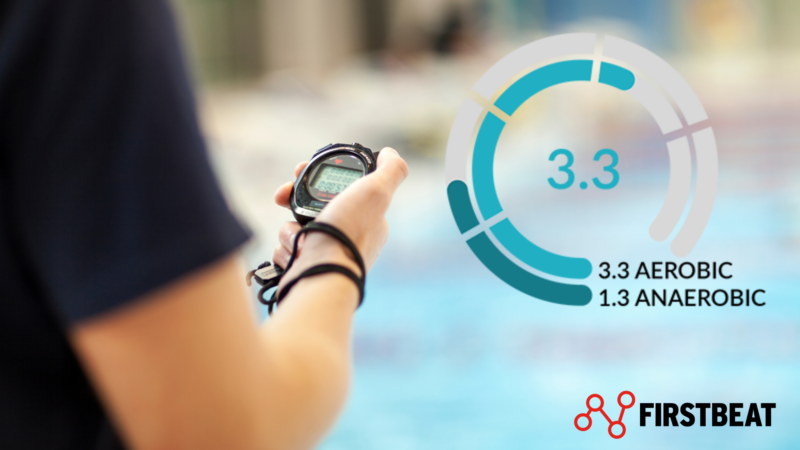
Managing athletes demands precision and insight. Strength and conditioning coaches, sports scientists, and team managers must balance training loads, track recovery, monitor injuries, and analyze performance data—all to ensure athletes deliver their best results.
Athlete Management Systems (AMS) combine all performance components, helping coaches better understand the complexity of human performance.
This article explores how AMS revolutionizes athlete management by supporting performance optimization, recovery tracking, and wellness improvement.
We will dive into the advanced features of these systems, including physiological data management, training load monitoring, and recovery insights, and show how they meet the unique demands of coaches, analysts, and athletes.
Athlete Management Systems: What They Do and Who They Help
Athlete management systems (AMS) are transforming how teams and coaches make decisions by providing a centralized platform to collect, analyze, and present critical athlete data. These tools are designed to optimize performance, recovery, and overall wellness by offering actionable insights drawn from metrics like training load, physiological performance, recovery status, and fitness trends.
With all key data in one place, AMS platforms give performance teams a clear, data-driven understanding of each athlete’s condition and readiness. Strength and conditioning coaches can fine-tune training plans, sports scientists gain deeper insights into physiological responses, and wellness professionals leverage these tools to monitor recovery and minimize injury risks.
AMS tools are essential for creating personalized, evidence-based strategies that support both health and performance.
These systems help align training and recovery strategies with individual athletes’ unique profiles, giving teams a competitive advantage.
A good AMS also plays a key role in performance management by enabling data-backed decision-making. Key features include:
- Monitoring physiological responses through heart rate (HR) and heart rate variability-based metrics to assess how athletes respond to training.
- Tracking training load and intensity over time, ensuring workloads are balanced to maximize progress while reducing the risk of overtraining.
- Assessing recovery, helping coaches identify when an athlete needs rest to prevent injuries or burnout.
This combination of insights ensures that training plans are tailored to match each athlete’s capacity, improving both safety and results.
Among specialized AMS tools, Firstbeat stands out for its focus on accurate physiological data. It helps teams to optimize their performance by delivering advanced insights through:
- Tracking metrics such as Training Load, TRIMP, Training Effect, Heart Rate Recovery, TRIMP/min, Movement Load, and Movement Intensity.
- Providing recovery analysis through data on stress-recovery balance and Quick Recovery Test results.
- Supporting real-time and post-session evaluations that guide adjustments to training and recovery plans.
Athlete management systems enable teams to make smarter, safer, and more individualized decisions.
How a Good AMS Boosts Performance, Recovery, and Results

1. Optimized Training Decisions
A good athlete management system (AMS) helps coaches and performance analysts make data-driven decisions by providing detailed insights into an athlete’s physiological condition in real-time and after training sessions.
Key metrics like Training Impulse (TRIMP) and TRIMP/min play a significant role in this process. TRIMP quantifies the overall training load by combining exercise intensity and duration, while TRIMP/min shows the rate at which training load (measured as TRIMP) is accumulated over a period of time.
Additionally, monitoring time spent in different heart rate zones can help coaches better prepare their athletes for the physiological challenges they will face in competition. Heart rate zones are a key indicator of the energy systems that athletes utilize during exercise. These zones range from Zone 1 (50-60% of maximum heart rate) to Zone 5 (90-100% of maximum heart rate). Each zone reflects a different level of exertion, from light, aerobic activities to high-intensity efforts that push the limits of an athlete’s cardiorespiratory system.
An AMS transforms this data into actionable insights. It allows you to tailor sessions to meet specific goals while avoiding overtraining—a condition that can lead to fatigue, injuries, and long-term performance decline.
With an effective AMS system like the tool offered by Firstbeat, which provides instant access to performance data and trends, you can review team and individual responses from recent sessions, analyze long-term patterns, and generate detailed reports for actionable feedback.
Actionable data from an AMS ensures training aligns with an athlete’s readiness and recovery needs.
2. Injury Prevention and Risk Management
Preventing injuries and managing risks are essential components of maintaining an athlete’s consistent performance. A good Athlete Management System (AMS) directly supports these goals by providing teams and coaches with critical data to make informed decisions that prioritize athlete health.
One key way an AMS aids injury prevention is by tracking training load and analyzing the balance between an athlete’s acute and chronic workload ratios (ACWR). This balance is key because sudden spikes in training intensity or insufficient recovery can increase the likelihood of injuries.
Physiological data, such as Heart Rate Variability (HRV), further improves this capability. HRV is a reliable indicator of an athlete’s recovery status, fatigue level, and overall stress. A dip in HRV can signal overtraining or mounting stress, which, if ignored, might lead to injury. With robust AMS tools, you can track this data in real-time and intervene before small issues escalate.
Additionally, recovery monitoring plays an important role in identifying early warning signs of physical strain or fatigue. AMS solutions often integrate recovery metrics like sleep quality, muscle soreness, and hydration levels.
When these metrics flag abnormalities, they prompt you to have a conversation with the athlete, and adjust training plans or workloads where necessary, keeping athletes healthier in the long run.
Data-informed training strategies are the foundation of injury prevention. By utilizing the insights an AMS provides, you can create smarter, safer routines that minimize risks, reducing downtime and ensuring athletes consistently perform at their peak.
As part of our individualized performance management toolkit, Firstbeat helps to identify risks of injuries by highlighting early signs of irregularities in accumulated load and recovery. This empowers coaches with actionable insights to proactively adjust training plans, safeguarding athlete health and optimizing performance.
AMS tools are essential for balancing performance demands with long-term athlete health.
3. Enhanced Recovery and Wellness Tracking
Effective recovery and wellness tracking is important for athletes to perform at their best while maintaining long-term health. An AMS offers tools to monitor and improve recovery, ensuring athletes are ready for the physical and mental demands of training and competition.
One of the key ways an AMS supports recovery is by analyzing critical physiological metrics like heart rate variability (HRV), sleep quality, and the balance between stress and recovery over 24-hour periods. These areas provide a clear picture of how well an athlete’s body is recovering from previous exertion.
For example, HRV—measured during sleep—indicates how the nervous system responds to stress and recovery. Higher HRV generally shows better recovery, while lower HRV can signal fatigue or overtraining. This data helps coaches adapt training plans to align with the athlete’s recovery status.
Tracking HRV, sleep, and recovery metrics ensures athletes maintain their peak performance.
Sleep data is another key component for optimizing recovery. An AMS tracks metrics like sleep duration and quality, which are directly tied to physical and mental restoration. Poor sleep can impair muscle repair, cognitive function, and energy levels, making it harder for athletes to perform.
By identifying patterns in sleep data, the system enables coaches to address potential issues, such as inadequate rest or inconsistent sleep schedules. This ensures athletes are well-rested and prepared for intense sessions or upcoming competitions. This kind of data can also be particularly useful for teams with demanding travel schedules across different time zones.
AMS tools also allow for precise adjustments to recovery plans. For example, if HRV analysis during sleep shows suboptimal recovery efficiency, coaches can modify rest periods, adjust training intensity, or recommend specific recovery strategies.
These insights reduce the risk of overtraining and help fine-tune recovery protocols to meet individual needs.
By providing accurate recovery insights, an AMS minimizes fatigue, improves overall performance, and protects athlete well-being. Monitoring recovery isn’t just about avoiding injuries; it also helps athletes sustain high performance over time and promotes a healthier long-term career.
4. Personalized Coaching in a Team Environment
Personalized coaching unlocks an athlete’s true potential, and a good Athlete Management System (AMS) turns this goal into reality. With precise insights into each athlete’s physiological performance, coaches can craft training plans as unique as their players.
Tools like Firstbeat Life elevate this process by delivering personalized insights into stress, recovery, and fitness, enabling coaches to design highly individualized programs that align with each athlete’s unique needs and drive their performance to new heights.
This customization ensures that every athlete progresses at the right pace and focuses on areas that will have the most impact on their performance.
Metrics such as VO₂max, which measures an athlete’s aerobic fitness capacity, are a key part of this process. With access to VO₂max data, coaches can set precise training goals that align with an athlete’s current fitness level and their long-term objectives.
For example, if an athlete’s VO₂max indicates room for improvement in endurance, their training plan can incorporate activities to target that specific area. This level of precision makes training more effective and avoids the inefficiencies of generalized programs.
Detailed recovery and workload data further improve the personalization process. By monitoring how well an athlete is recovering after training sessions and how much strain they’re under, performance teams can adjust training intensity to match the athlete’s current condition.
This helps prevent overtraining, which reduces injury risk, and ensures that athletes are operating within their optimal performance zones. When training intensity aligns with recovery capacity, athletes can make steady progress while reducing the risk of setbacks.
The benefits of personalized coaching extend beyond just improving efficiency. A tailored approach maximizes an athlete’s potential by targeting their unique strengths and weaknesses.
At the same time, it minimizes unnecessary strain, fostering long-term development. This combination of targeted improvement and reduced injury risk creates a sustainable path to peak performance.
Tailored training programs based on individualized AMS data improve efficiency and reduce injury risk.
5. Long-Term Performance Monitoring and Trends
AMS enables long-term performance monitoring by collecting and analyzing key physiological metrics over an extended period of time. These metrics include heart rate-based metrics such as TRIMP, Training Effect, %HRMax, Acute Training Load, and Acute:Chronic Workload Ratio (ACWR).
By examining these data points across weeks, months, or even years, you can identify patterns that reveal how athletes respond to training, recover from exertion, and progress in their fitness levels.
Understanding long-term trends helps you make smarter training decisions. For example, AMS can highlight whether an athlete’s recovery efficiency is improving, stagnating, or declining. Similarly, it can spot how different training loads impact fitness progression over time. This allows coaches to adapt and fine-tune training plans based on evidence instead of guesswork.
Long-term monitoring also supports effective periodization, which is the process of planning training cycles to ensure athletes peak at the right moments—such as during competitions. By utilizing data on training loads and recovery trends, coaches can design programs that balance intensity and rest, minimizing the risk of overtraining while maximizing performance potential when it matters most.
Ultimately, consistent tracking leads to better decision-making. It gives you a clear picture of what’s working and what isn’t, helping you optimize performance outcomes and sustain improvements over the long haul.
Long-term performance monitoring transforms data into actionable insights for sustained athletic success.
What Makes a Great AMS for Performance Teams?

1. Training Load Management
Training load management is critical for achieving consistent athletic performance while minimizing the risk of injuries. By tracking and adjusting workloads, you can ensure athletes train efficiently without pushing beyond their limits.
Firstbeat Sports excels in this area, providing advanced metrics like Training Impulse (TRIMP) and Excess Post-Exercise Oxygen Consumption (EPOC) to monitor training intensity and volume. This allows coaches to tailor workloads, optimize performance, and reduce injury risks effectively.
TRIMP measures the intensity and duration of a workout, providing a numerical value that reflects the athlete’s effort. This helps you gauge how demanding a session was and whether it aligns with performance goals. EPOC, on the other hand, quantifies the body’s recovery demands by evaluating how much oxygen is needed post-exercise to return to baseline.
Another essential aspect is balancing acute and chronic workloads using the Acute-to-Chronic Workload Ratio (ACWR). ACWR compares short-term (acute) training loads—such as the past week—with longer-term (chronic) averages, typically over a month.
Maintaining an appropriate balance between these workloads is important. For example:
- A sudden spike in acute workload can increase the risk of injury.
- Low chronic workloads might indicate insufficient conditioning, reducing long-term performance capacity.
- Stable workload trends signal consistency, helping athletes remain in peak condition while minimizing fatigue.
Tracking ACWR allows you to identify patterns that might point to issues like overtraining or a lack of recovery. This awareness empowers you to make timely adjustments, ensuring the training strikes the right balance between challenge and recovery.
Effective training load management combines workload tracking with recovery insights to boost performance and reduce injury risks.
2. Recovery Monitoring
Recovery monitoring tools within an AMS provide valuable insights that help coaches and teams make informed decisions to support both short-term readiness and long-term health.
Heart Rate Variability (HRV) analysis is one of the most effective ways to evaluate recovery. HRV measures the variation in time between heartbeats, which reflects the balance between the body’s stress and recovery systems.
A high HRV generally indicates that the body is well-recovered and ready for intense physical activity, while a low HRV suggests that the athlete might be fatigued or under stress. By tracking HRV data, AMS tools give coaches a clear picture of an athlete’s recovery status.
This allows them to adjust training intensity to prevent burnout or overtraining while ensuring athletes can perform at their best during critical periods.
Sleep tracking also plays an important role in recovery monitoring. Sleep quality directly impacts how well the body repairs itself after training. Many AMS platforms integrate sleep data with HRV trends, offering a more complete view of an athlete’s recovery.
Poor sleep might indicate that the body isn’t recovering effectively, which can lead to decreased performance and a higher risk of injury. Coaches can identify when an athlete needs to prioritize rest over training by analyzing this data.
Balancing stress and recovery over a 24-hour period is another critical factor. AMS tools consolidate data on physical exertion, sleep, and HRV to evaluate the athlete’s overall stress-recovery balance.
This comprehensive approach helps teams tailor training loads, recovery protocols, or even lifestyle recommendations to maintain an athlete’s readiness and long-term health. The Quick Recovery Test (QRT) offered by Firstbeat advances this capability by delivering a three-minute assessment of an athlete’s readiness for training.
With the ability to identify imbalances in recovery and stress, the QRT empowers coaches to make real-time adjustments that optimize performance while minimizing injury risks. This tool exemplifies how data-driven insights can transform recovery monitoring into a science-backed strategy for individualized athlete management.
3. Performance Insights
Assessing fitness and analyzing performance data is critical for developing effective training strategies. A good AMS simplifies this by turning raw data into actionable insights that guide decision-making.
One key metric describing aerobic performance is VO₂max, the maximum amount of oxygen an athlete’s body can use during intense exercise. As a core measure of aerobic fitness, VO₂max reflects endurance capacity and overall cardiovascular health. While true VO2max assessment would require breathing gas analyzer, it is possible to indirectly estimate the aerobic capacity through submaximal field tests with known movement output and internal response.
Beyond VO₂max, AMS platforms track an array of physiological data points—such as heart rate (HR) and heart rate variability (HRV)—across training sessions, weeks, and even entire seasons. This long-term data collection allows you to observe performance trends, spot patterns, and measure recovery efficiency in ways that manual tracking simply cannot match.
Identifying consistent improvements in HRV alongside stable VO₂max/aerobic performance levels could indicate better recovery and stress management. On the other hand, a sudden drop in VO₂max/aerobic performance or HRV might signal overtraining, fatigue, or emerging health issues.
Recognizing these trends early enables timely adjustments, ensuring athletes stay on the path to optimal performance.
AMS dashboards also help coaches develop periodized training programs. By analyzing how performance metrics evolve, you can align training cycles with periods of peak fitness, whether the goal is to excel during a championship or maintain steady progress over a season.
These insights turn data into strategy, bringing precision to every decision you make.
4. Real-Time Insights for Immediate Adjustments
During training, AMS tools track live physiological metrics such as heart rate (HR), % of your HR Max, Training Impulse (TRIMP), Anaerobic and Aerobic Training Effect (TE), and TRIMP/Min. These metrics give you a window into how an athlete’s body is responding to the current workload.
If an athlete’s load or intensity increases more than planned or their HRV indicates excessive strain, you can immediately adjust the session. This prevents overexertion, reduces the risk of injury, and ensures that each session goes a planned.
Real-time data creates a dynamic feedback loop where decisions are based on actual responses, not guesswork.
After training, AMS platforms analyze the session’s data to provide deeper insights. Training Effect help you assess how the session impacted the athlete’s aerobic and anaerobic systems.
This post-session analysis is critical for understanding whether training goals were met and identifying recovery needs. Over time, these insights allow you to refine future training plans, tailoring them to each athlete’s unique physiological profile and performance objectives.
Continuously evaluating effort and recovery helps create a more sustainable path to peak performance.
Conclusion
A good athlete management system improves decision-making, reduces injury risk, and improves both individual and team performance. It’s both a strategic tool and a foundation for long-term athletic success.
By focusing on the precise management of training loads, recovery patterns, and physiological responses, performance teams can unlock each athlete’s full potential and reduce unnecessary risks.
Firstbeat enhances this process by delivering advanced physiological insights that empower smarter, science-backed decisions. From tracking heart rate variability (HRV) to monitoring training loads and recovery efficiency, Firstbeat equips coaches and performance analysts with the tools they need to optimize athlete outcomes.
Book a demo with our experts to discover how Firstbeat can integrate into your team’s workflow and elevate performance with actionable data.
FAQ
What is an athlete management system?
An athlete management system (AMS) is a software platform that centralizes data related to athlete performance, health, and training. It enables coaches and sports organizations to monitor and analyze metrics such as training loads, recovery status, and wellness indicators to optimize performance and reduce injury risk.
How does an AMS improve athlete performance?
An AMS enhances athlete performance by providing data-driven insights into training effectiveness, recovery needs, and overall wellness. By analyzing this information, coaches can tailor training programs to individual athletes, ensuring optimal load management and timely interventions to prevent overtraining or injury.
What features should a good AMS include?
A robust AMS should offer features like training load monitoring, recovery and wellness tracking, fitness assessments, real-time performance insights, and data integration from various wearable devices. These capabilities enable comprehensive monitoring and management of athlete health and performance.
How does an AMS assist in injury prevention?
An AMS aids in injury prevention by tracking metrics such as training intensity, workload balance, and recovery status. By identifying patterns that may lead to overtraining or fatigue, coaches can adjust training plans proactively to mitigate injury risks.
Who benefits from using an athlete management system?
Athlete management systems benefit performance coaches, sports scientists, medical staff, and athletes themselves. They provide a centralized platform for monitoring performance, health metrics, and training data, facilitating informed decision-making and personalized coaching strategies. Youth teams and junior players can also benefit from an athlete management system to progressively increase the training load for long-term athlete development.
If you liked this article, you should subscribe to our newsletter.
You might also be interested in

Using Firstbeat Sports Training Effect During Return-to-Play
The Return-to-Play process, or indeed any conditioning program that is not in the form of the athlete’s sport, can be a challenge to manage. Questions such as how much should…

Time Spent in Different Heart Rate Zones – Comparison Between Sports
At Firstbeat Sports, we analyzed over 4 million measurements to compare the time athletes spend in each heart rate zone across various sports. The findings reveal intriguing patterns that highlight…
